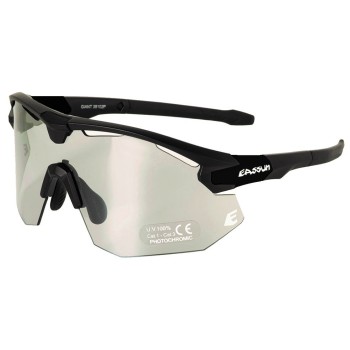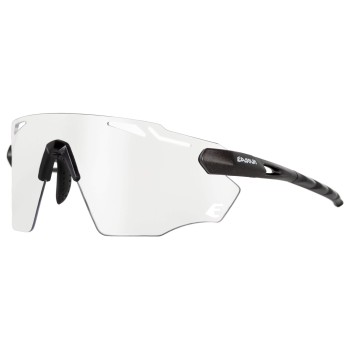Cycling eyewear brands have always had a big dilemma in the face of a very definite problem, which can be summed up in one question: What alternative to offer to combat the constant changes in light? This is undoubtedly one of the most recurring questions in the industry for many years.
No one denies that the inclusion of clear lenses was a major breakthrough in the market, as it enabled riders to enjoy the performance of the glasses in more adverse weather conditions such as rain or cloudy days, as it enhanced their visibility while protecting their eyes. Despite this improvement, the problem outlined in the first lines was still present, because clear lenses were ideal for cloudy or rainy days, but ineffective for sunny days, while sunglasses were used only for conditions of high sun intensity, given the impossibility of using them in contexts where the environments were dark due to the lack of light.
Finally, the change that marked a turning point was the launch of a new lens technology: photochromic lenses. Why was this development so significant? Because, at last, an effective solution was presented in which cycling glasses were equally safe and efficient on cloudy and/or sunny days, without the need to constantly interchange glasses. On a practical level, the lenses adapt to the ambient brightness in any open space. In other words, the lens automatically darkens more or less depending on the intensity of the sun's rays; the more sun, the darker it gets.
In addition to the mentioned advantage, the incorporation of photochromic cycling glasses has brought several very positive points such as the possibility to better protect riders' eyes from the characteristic glare or the reduction of the fatigue that comes with it, protecting their vision to the maximum. It is also very useful at all times of the year, especially when there are unexpected weather variations.
If you have never tried a photochromic cycling glasses, we recommend that you test them and check, at first hand, the qualitative leap that it supposes. In this sense, here are some of the most popular models at the moment:
Paradiso EASSUN sunglasses make the difference for their big photochromic lens, being water repellent, adaptable nose bridge and their ventilation system against stem. Belonging to CAT 1-2 and weighting 37 grams, they are ideal for cycling.

2) Fartlek EASSUN Running Sunglasses, Photochromic, Adjustable and Lightweight
The Fartlek EASSUN sunglasses feature a small peripheral, water-repellent and photochromic lens, a nosepiece that can be adapted to individual nose sizes and an innovative ventilation system: Airflow® Technology. The lack of spoiler above and below the attachment helps to make it a lightweight sunglass with a net weight of 27 grams. Ideal for any athlete practising any running discipline.

3) Cycling Sunglasses Giant EASSUN, Photochromic, Anti-slip and Adjustable with Ventilation System
Giant EASSUN sunglasses only have one photochromic, cylindric and anti-slip big lens. They also have an adaptable nose bridge which can perfectly fit to all noses. Their design has an Airflow® technology which avoids steam. Their use is recommended for cycling.






Comments (0)